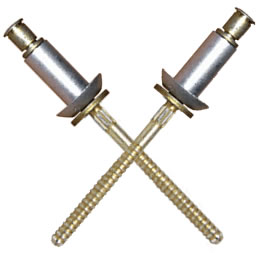
Rivets have become a popular alternative to traditional threaded fasteners. They are used to hold two or more parts together — just like traditional threaded fasteners. The difference is that rivets are permanent, whereas threaded fasteners are temporary. If you’re planning to use rivets, however, you may want to invest in a pair of rivet cutters.
Overview of Rivet Cutters
Rivet cutters are handheld cutting tools that are designed specifically for use with rivets. Whether it’s a solid rivet or a blind rivet, rivets often come in longer-than-needed lengths. Rather than attempting to install an oversized rivet, you can trim it. Rivet cutters feature a bladed end that will easily cut through aluminum and other common rivet materials.
How Rivet Cutters Work
Most rivet cutters feature a handle and a pair of hardened steel blades. When you squeeze the handle, the bladed end will collapse over the rivet, thereby cutting it. Rivet cutters are similar to pliers or bolt cutters, but they are designed to cut rivets.
Rivet cutters typically have an adjustable end to accommodate common rivet sizes. You can adjust a pair of rivet cutters so that they trim rivets to a specific length.
Common diameters supported by rivet cutters include the following:
- 3/32 inch
- 1/8 inch
- 5/32 inch
- 3/16 inch
- 1/4 inch
How to Use Rivet Cutters
The first step to using a pair of rivet cutters is to measure the rivet. Rivets are available in different sizes. Before cutting it, measure the rivet to determine how much excess material needs to be trimmed.
Now it’s time to position the rivet in the cutters. The excess portion of the rivet should be aligned between the cutter’s blades. After adjusting the end of the cutters to the appropriate length, squeeze the handle. The cutters should make a clean cut through the end of the rivet, essentially slicing off the end. You can now install the newly trimmed rivet.
Handheld vs Hydraulic Rivet Cutters
While most rivet cutters are handheld, there are also hydraulic rivet cutters. They are both designed to cut and trim rivets. Hydraulic rivet cutters, however, are designed for use with larger and stronger rivets.
Hydraulic rivet cutters feature a hydraulic system. They leverage pressurized fluid to apply the cutting force. Hydraulic rivet cutters still feature a handle, but most of the cutting force comes from the pressurized fluid, which allows for a stronger action.



